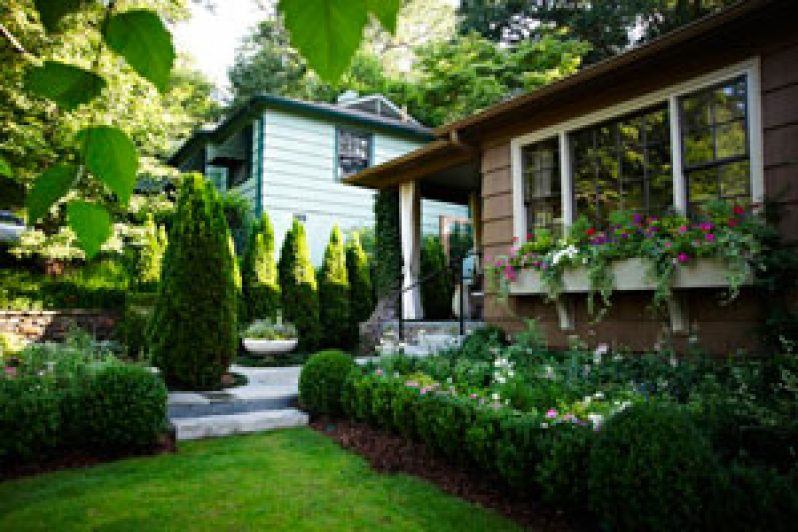A HEDGE is a fence or boundary formed by closely growing bushes or shrubs.
 Unlike a fence made of wood, or concrete or steel mesh, a hedge is a “living” fence.
Unlike a fence made of wood, or concrete or steel mesh, a hedge is a “living” fence.
Hedges may be used to mark boundaries, such as along property lines or within sections of a property, or walks or drives, or as side screens; and they may also be used as barriers to keep children or animals in or out of the yard.
Hedges are also useful in providing privacy, as around a particular section of the yard, or serving as windbreaks.
Some good examples of hedges made from local plants can be seen in the Botanical Gardens, where they line the driveway or entrances to various parts of the gardens as single or even double hedges.
Many homeowners in Georgetown and on the East Coast of Demerara have planted “living” fences outside their inanimate fences to add to the attractiveness of their properties.
There is also the use of hedges as climbers to screen or hide a fence made of the usual mundane fencing material.
Mr. Fitz Ogle and members of the Evergreen Nature Study Club specialize in helping and/or advising people on how to plant complete or partial hedges in their yards for enhancement of their home landscapes.
“Apart from practical purposes, a well done hedge can add to the aesthetic beauty of your yard,” Mr. Ogle said. Regardless of the purpose, hedges should be dense and compact. “The plant needs to be planted in a line and close to each other, so that the leaves can interact,” he said.
Some people stagger the plants in a double row to get density, but in event, great care has to be taken to ensure that the trees are planted in line. The hedge should be easily sheared, and yet look good after shearing.
Many ornamental trees and shrubs are well suited for hedges, but selection of a specific plant should be made by considering the particular purpose of the hedge, and the growing conditions at the desired site.
“Usually, plants with medium or fine leaves make better hedges than those with coarse leaves.
“The preferred plants are the hardy plants. A hedge built from this type of shrub can last for years,” Ogle said.
Some tough local plants which make good hedges include the prickly plant known as Bread and Cheese, the powder puff plant, plants of the mimosa species, and pines such as the “needle and thread” pine of the genus ficus.
The popular plant Ixora, locally known as the sugar cake plant, is also a good candidate for a hedge, but may not be as hardy as the others hitherto mentioned.
Hedges used as windbreaks are usually planted to protect plants which are susceptible to damage from high winds, for example banana trees, whose leaves tend to shred, and the plant may even be bowled over by strong gusts of wind.
Windbreaker hedges are, of course, planted at the windward side of the yard. They can be made of palm trees of the shorter variety, such as the miniature coconut trees.
Ogle said that the length of time necessary to achieve the desired size hedge will depend upon the plant and its vigour.
Shaping or training the plants would require the right tools, but need not be tedious. Some of the techniques for pruning will be discussed in a future article.
For many people, a well-cared-for hedge, as a complete property boundary, or partial boundary or sight screen, is an indispensable component of a beautiful yard.
Why don’t you grow a hedge in your yard?



.jpg)











